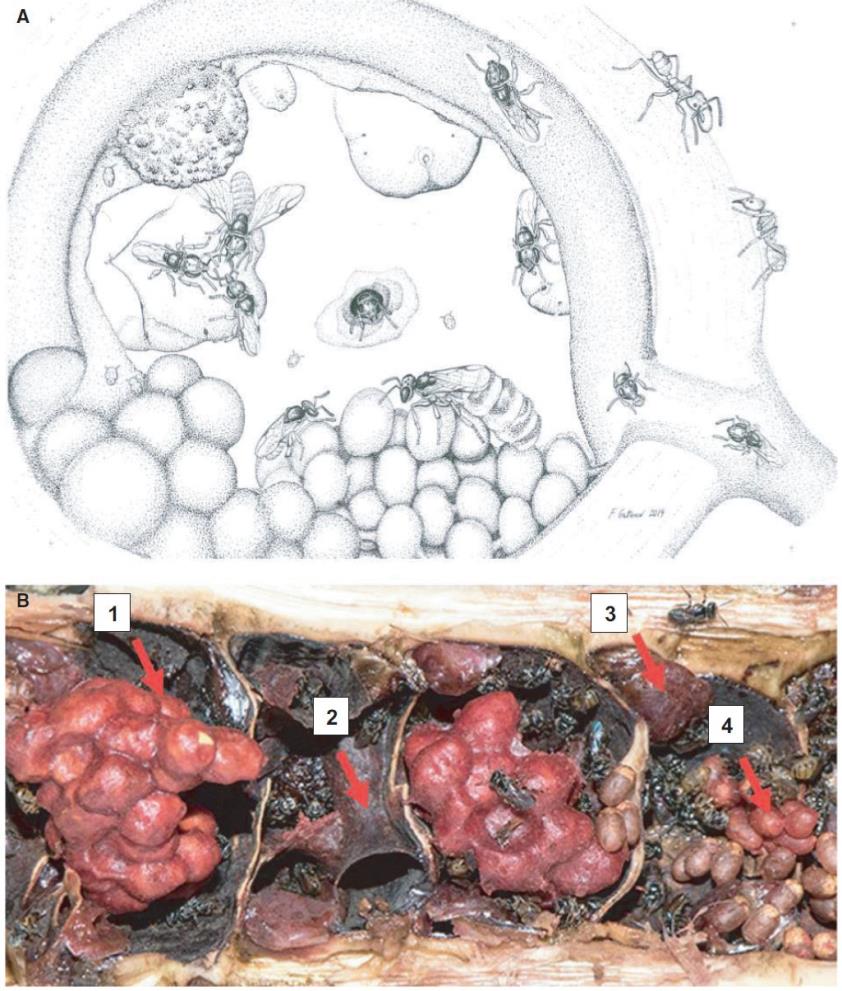An interesting study has just been published by stingless bee extraordinaire, David Roubik. It’s on some of the smallest stingless bee species in the world, mainly Plebeia species whose workers are ~2mm long.
These bees live in the remote rainforests of the Western Amazon. Roubik describes a remarkable and unique relationship between these bees, ants, a tree species, and scale insects. These bees make tiny nests in sections of the hollow stems of Cecropia trees, a tall pioneer species from the same plant family as Australian rainforest stinging trees. But the bees need ants to have lived in the tree hollows before them, to chew entry holes big enough for the bees to be able to enter into the hollows. So, the bees rely on both the trees and the ants. Within the nests the bees live among large scale insects. The bees’ sugar needs are met by consuming sweet honeydew excreted by the resident scale insects. Sugar water on tap at home!
The bees also collect excreted wax from the scale insects, which the bees use in nest construction. Because the bees make and store little to no honey, and they consume the scale insect’s secretions, the nest is relatively low humidity so the scale insects benefit from the bees by having a dry place to live with low chance of fungal infection. The ant species whose unoccupied nests these bees inherit also live alongside these bees in other nearby hollows and the ants defend the tree from herbivores and competitor plants. Isn’t ecology complicated and amazing!
The full paper can be found here: https://esajournals.onlinelibrary.wiley.com/doi/abs/10.1002/ecy.3367.
Citation: Roubik, D. W. 2021. Mutualism within a para-sitism within a mutualism: the bees and coccids that in-habit Cecropia ant-plants. Ecology 0(0):e03367. 10.1002/ecy.3367
Review: Tobias Smith

Cecropia bees (Plebeia sp.) and coccids of different life stages living in Cecropia stems.
(A) General schema in nest with bees entering, leaving entrance tube with trash pellet, and nest pollen pots, brood and queen, resin storage deposit (upper left), three bees feeding at coccid anal pore exudate, worker passing through hole be-tween Cecropia inter-nodes, coccid “crawler” first-instar larvae in nest; ants on exterior bark, one with pseudococcid in mandibles.
(B) Plebeia nest; light red pollen pots (1), internal ring entrance tube (2), dark red scale insect Cryptostigma (3), young and mature Plebeia brood (4).
Panel A drawing credit: F. Gattesco;
Panel B photo credit: D. W. Roubik.
